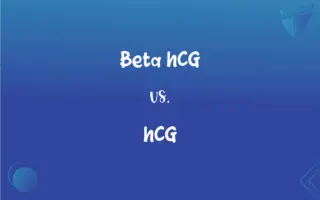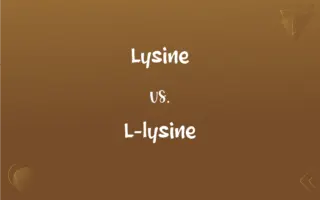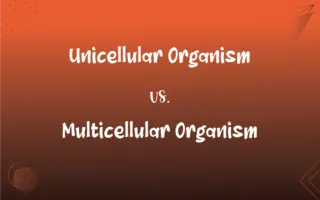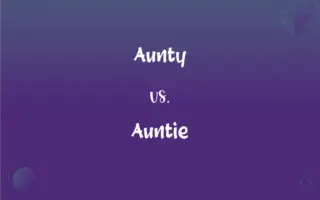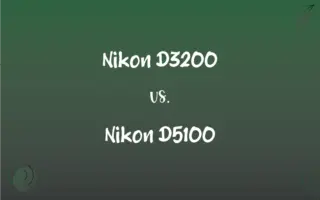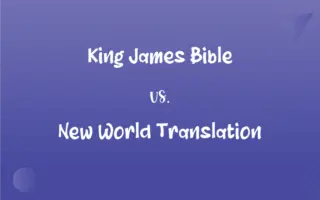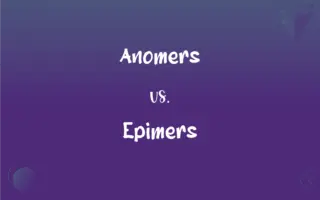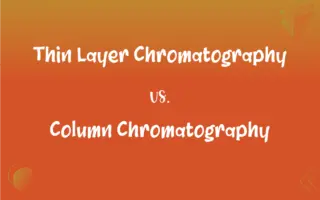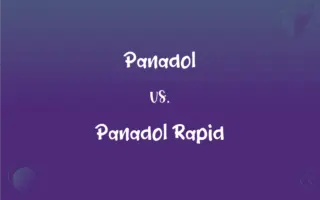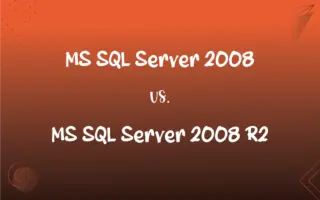Aggregation vs. Association: What's the Difference?
Edited by Aimie Carlson || By Janet White || Published on February 20, 2024
Aggregation is a special form of association where one class is a part of another class, implying a whole-part relationship, while association is a general relationship between two classes without implying ownership.

Key Differences
Aggregation is a specialized form of association that represents a "part-of" or "has-a" relationship, indicating that one object is a constituent part of another. Association, on the other hand, is a broader relationship that simply implies a linkage between two objects in a model, without specifying a part-whole relationship.
In aggregation, the lifetime of the part can be independent of the whole; the part can exist independently of the whole. In contrast, association does not inherently imply any lifetime dependency between the linked objects.
Aggregation implies a stronger relationship as compared to a general association. It indicates a more integral connection where one class is a component of another. In association, the relationship can be more flexible and less integral.
Both aggregation and association can have varying multiplicities (one-to-one, one-to-many, many-to-many) and can be either unidirectional or bidirectional. However, the "part-of" nature of aggregation often leads to a more structured multiplicity.
In object-oriented modeling, aggregation is used to represent more cohesive and structured relationships, while association is used for more generic connections between objects, where no strong ownership is implied.
ADVERTISEMENT
Comparison Chart
Relationship Type
Part-of relationship (stronger)
General linkage (weaker)
Lifetime Dependency
Parts can exist independently of the whole
No lifetime dependency
Strength
Stronger, implies integral connection
Weaker, more flexible
Multiplicity
Often structured (e.g., one-to-many)
Flexible (any type)
Usage in Modeling
Represents cohesive structures
Represents general connections
ADVERTISEMENT
Aggregation and Association Definitions
Aggregation
Aggregation implies a whole-part relationship in object-oriented design.
A university aggregation contains departments and faculties.
Association
Association represents a general relationship between two separate classes.
In an association, a student is linked to a library.
Aggregation
Aggregation represents a 'has-a' relationship between objects.
A computer system's aggregation has a keyboard, a monitor, and a CPU.
Association
Associations can be one-to-one, one-to-many, or many-to-many.
A teacher association with students is typically one-to-many.
Aggregation
Aggregation is a relationship where an object is made up of other objects.
A car aggregation includes wheels and an engine as parts.
Association
Association can be bidirectional or unidirectional.
A customer and order association can be bidirectional, showing mutual interaction.
Aggregation
In aggregation, the whole can exist without its parts.
A tree object can exist in aggregation even if leaves are removed.
Association
In association, the linked objects can exist independently.
A doctor's association with a hospital doesn't affect their independent existence.
Aggregation
Aggregation allows individual parts to be shared among different wholes.
In a library aggregation, a book can belong to multiple categories.
Association
Association does not imply ownership between objects.
An employee association with a department doesn't mean ownership.
Aggregation
Constituting or amounting to a whole; total
Aggregate sales in that market.
Association
The act of associating or being connected with
My parents disapproved of my association with my friends from across town.
Association
An organized body of people who have an interest, activity, or purpose in common; a society.
FAQs
What is aggregation in object-oriented programming?
Aggregation is a special form of association representing a whole-part relationship.
What types of multiplicity are possible in aggregation?
Aggregation can have one-to-one, one-to-many, or many-to-many relationships.
How does association differ from aggregation?
Association is a general link between two classes, without implying a part-whole relationship.
Is association a strong relationship?
Association is a flexible relationship and not necessarily strong.
What is an example of an association?
A teacher associated with multiple students in a class.
How does aggregation affect object lifetimes?
In aggregation, object lifetimes are independent.
Is association limited to specific types of classes?
No, association can occur between any types of classes.
What is an example of an aggregation?
A computer system as an aggregation of a keyboard, monitor, and CPU.
Does aggregation imply a stronger connection than association?
Yes, aggregation implies a stronger, more integral connection.
Can an aggregation exist without its parts?
Yes, in aggregation, the whole can exist independently of its parts.
Are aggregation relationships bidirectional?
Aggregation can be either unidirectional or bidirectional.
How does aggregation support object-oriented design?
Aggregation supports structured and cohesive object models.
Can association represent ownership?
No, association doesn’t imply ownership between objects.
Can parts in an aggregation be shared?
Yes, parts in an aggregation can be shared among different wholes.
Can an association exist without both objects being present?
In association, objects can exist independently of the relationship.
In what scenarios is association used?
Association is used to link classes in general, flexible relationships.
Can association be temporary?
Yes, associations can be temporary or long-term.
What kind of relationship does aggregation imply?
Aggregation implies a 'has-a' or part-whole relationship.
How does association differ in terms of directionality?
Association can be either unidirectional or bidirectional.
What is the significance of aggregation in modeling?
Aggregation helps in representing realistic and structured relationships in models.
About Author
Written by
Janet WhiteJanet White has been an esteemed writer and blogger for Difference Wiki. Holding a Master's degree in Science and Medical Journalism from the prestigious Boston University, she has consistently demonstrated her expertise and passion for her field. When she's not immersed in her work, Janet relishes her time exercising, delving into a good book, and cherishing moments with friends and family.
Edited by
Aimie CarlsonAimie Carlson, holding a master's degree in English literature, is a fervent English language enthusiast. She lends her writing talents to Difference Wiki, a prominent website that specializes in comparisons, offering readers insightful analyses that both captivate and inform.

